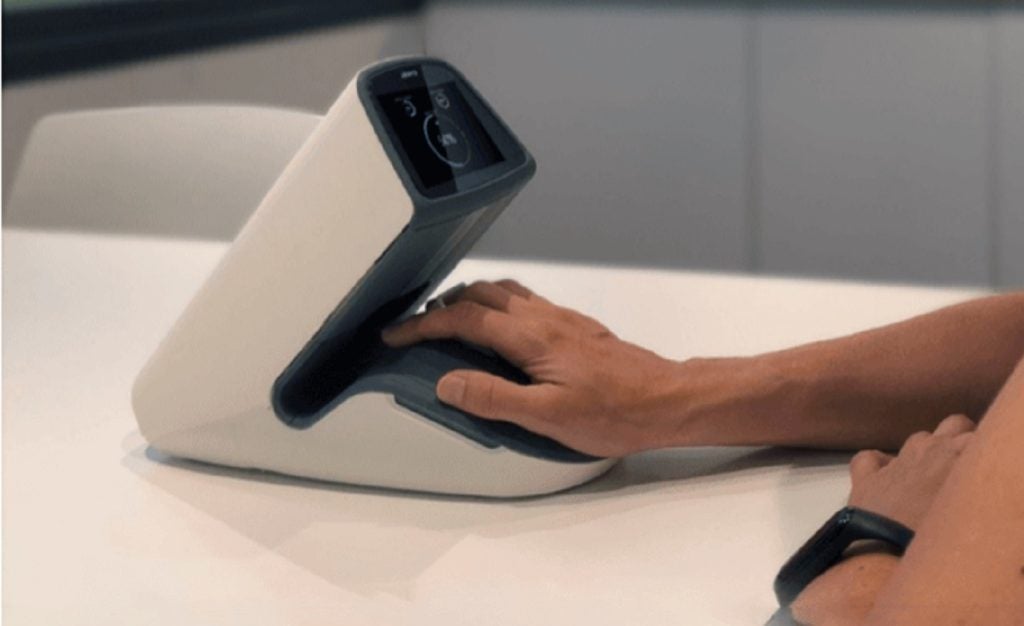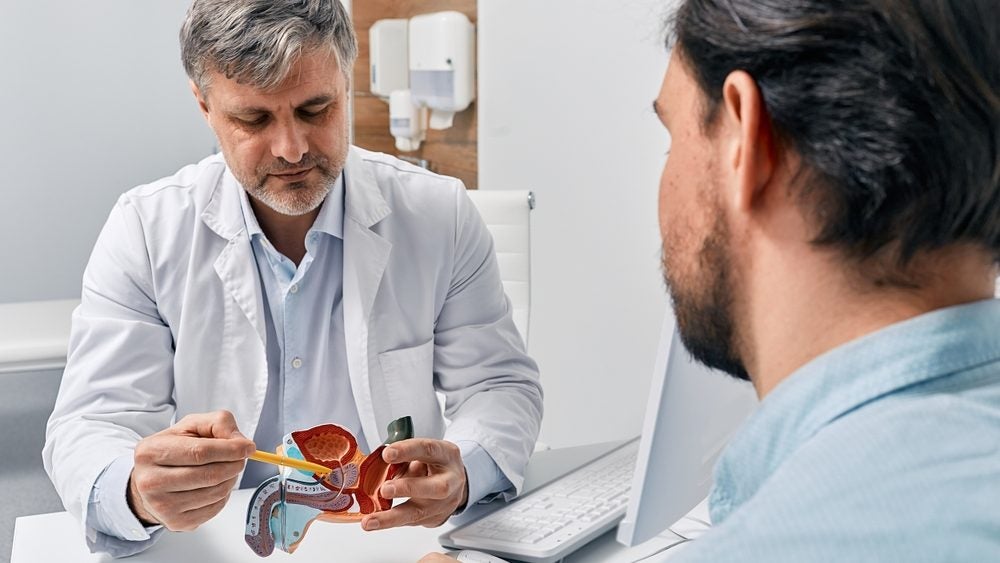Medical Device Network lists the top five terms tweeted on orthopaedics in Q4 2021, based on data from GlobalData’s Medical Influencer Platform.
The top trends are the most mentioned terms or concepts among Twitter discussions of more than 150 orthopaedics experts tracked by GlobalData’s Medical Influencer platform during the fourth quarter (Q4) of 2021.
1. Tendon – 167 mentions
A comparison of acromiohumeral distance (AHD) and supraspinatus tendon thickness (STT) in people with shoulder impingement syndrome (SIS), a review of the treatment options for patellar tendinopathy, and how tendinopathy can be addressed were some of the popular discussions on tendon in Q4 2021.
Adam Meakins, a physiotherapist and sports scientist, shared a study that compared AHD and STT in people with SIS. The study enrolled 78 participants aged between 40 and 80 years and included 39 patients with SIS who were matched to 39 asymptomatic persons with no shoulder complaints. Ultrasound imaging was used to examine the AHD and STT of the two groups. T-tests were also used to detect any differences in participant characteristics within the AHD and STT groups. The study revealed that patients suffering from SIS had higher AHD and STT. The findings also indicated that people with shoulder pain caused by SIS have a thickened supraspinatus tendon, which is caused by the increase in distance between the humerus and the acromion.
In another tweet, Dr. Carles Pedret, a specialist in sports medicine, shared an article on a systematic review of 37 randomised studies on the management of patellar tendinopathy (PT) using various interventions. The findings of the review examined 33 distinct treatments and their combinations, with the majority of them being single analyses. Extracorporeal shockwave therapy (ESWT) seemed to have little efficacy in the treatment of PT. Furthermore, isometric exercise was found to be the best option to provide instant pain alleviation after treatment for PT when compared to isotonic exercise. Topical glyceryl trinitrate (GTN) and hyaluronic acid injection, paired with eccentric exercise and moderate, gradual resistance training were found to be the most effective treatments, the article highlighted.
See Also:
Tendon was also discussed by Bill Vicenzino, professor in sports physiotherapy at the University of Queensland, who shared infographics related to the problems surrounding tendon injury. Tendinopathy is the cause of half of all workplace injuries with a 45% prevalence rate among recreational athletes. The injury can take longer to heal and hinder a patient’s ability to return to physical activity compared to other injuries such as muscle strains, fractures, and dislocations. Furthermore, there has been a rise in the number of tendon injuries that are resulting in chronic physical impairments, the article noted.
How well do you really know your competitors?
Access the most comprehensive Company Profiles on the market, powered by GlobalData. Save hours of research. Gain competitive edge.

Thank you!
Your download email will arrive shortly
Not ready to buy yet? Download a free sample
We are confident about the unique quality of our Company Profiles. However, we want you to make the most beneficial decision for your business, so we offer a free sample that you can download by submitting the below form
By GlobalData2. Knee Replacement – 138 mentions
The effect of pre-operative exercise intervention in total knee arthroplasty (TKA) rehabilitation, increase in hip and knee replacements in 2021 despite the Covid-19 pandemic, and the role of physical therapy in recovery after knee replacements were among the popular discussions in Q4.
David Hunter, osteoarthritis scientist and clinician, shared an article on a study that performed a systematic review of papers related to the pre-operative exercise of TKA from January 2000 to January 2021 to understand the effects of pre-operative exercise intervention in TKA. The study examined 911 publications and the results showed that after the intervention the experimental group patients had better range of motion (ROM) flexion than the control group patients. The findings also suggested that pre-operative exercise can enhance knee flexion and mobility, minimise inflammatory pain and stiffness while improving muscular strength and joint function.
In another tweet, Dr. Lee Rubin, an orthopaedic surgeon, shared an article on the increase in hip and knee replacements procedures in 2021. The American Joint Replacement Registry’s 2021 annual report mentioned that hip and knee replacements increased by 18.3% from 2020 despite a pause due to the pandemic. The report also highlighted that the length of post-operative stays for hip and knee replacements decreased in 2021, while cementless fixations increased.
Knee replacement was also mentioned in a discussion about the role of physical therapy in recovery after knee replacements in an article shared by Dr. Frisch, a specialist orthopaedic surgeon. Physical therapy can aid in the restoration of strength and ROM, enabling patients to return to their daily activities more quickly. It has several advantages, including increasing the strength of the muscles, improving blood circulation to aid the recovery process and accelerating patients’ ability to resume daily activities, the article detailed.
3. Meniscus – 104 mentions
A study examining whether meniscus injury increases the risk of comorbidities, the treatment options for a discoid meniscus injury, and the details of meniscectomy procedures were some of the trending discussions on meniscus in the last quarter.
Dr. Chad Cook, a clinical researcher and physical therapist, shared an article on a study determining whether meniscus injury increases the risk of comorbidities among Military Health System recipients. The study included 1,686 participants who had a cruciate ligament injury and 13,146 people who had a meniscus injury. The participants were separated into two groups and data was collected 12 months before and 24 months after each injury to examine the prevalence of comorbidities between the groups. The findings of the study revealed that surgery had a protective impact for six of the comorbidities including concussion, insomnia, depression, and substance abuse when it came to a meniscus injury. Surgery, however, did not have any impact on the risk of comorbidities in patients with cruciate ligament injury, the article noted.
The term was also discussed by Dr. Robert LaPrade, a knee specialist, who shared an article on the treatment of discoid meniscus injury, which requires treatment to alleviate symptoms caused by the rupture. The meniscus is thin and degenerative in nature and a large portion of it needs to be repaired when it tears. Patients who need a discoid lateral meniscus resection or saucerisation are required to be carefully monitored to ensure that they do not develop knee arthritis because the lateral meniscus can take up to 70% of the lateral compartment’s shock. A physical rehabilitation plan is required to achieve the best results after meniscus surgery, the article highlighted.
In another tweet, Dr. Jeff Padalecki, a sports medicine physician at the Medical Park Orthopaedic Clinic, shared an article on meniscectomy procedures. Meniscus tear can cause pain on the inside or outside of the knee, create a sense of instability, locking, catching, and soreness, which can be detected by magnetic resonance imaging (MRI). A partial meniscectomy can be conducted to treat symptomatic meniscus tear by removing the torn portion as well as the damaged area. Furthermore, a combination of arthroscopic and open surgery can be used to repair the meniscus and retain as much of the native meniscus as feasible. Knee protection is required to enable the meniscus to heal after a meniscal repair, the article noted.
4. Arthroplasty – 92 mentions
Tumour calcinosis complicating a reverse total shoulder arthroplasty, shoulder arthroplasty procedure with the biconcave (B2) glenoid and the shift in opioid prescription before and after total hip arthroplasty (THA) and total knee arthroplasty (TKA) were some of the popular discussions on arthroplasty in the fourth quarter.
Dr. Robert U. Hartzler, an orthopaedic surgeon, shared an article on how tumour calcinosis (TC) complicated reverse total shoulder arthroplasty. TC has been characterised by hyperphosphatemia and hypercalcemia, which is linked to end-stage renal disease (ESRD) and has an influence on soft tissue due to the formation of dystrophic calcifications. The most common treatment for TC is medical therapy that can include treatments such as phosphorous chelation and phosphate restricted diet, which are effective in reducing serum phosphorus. Surgery can be performed to reduce discomfort and enhance the quality of life although recurrence rates are high due to the soft-tissue invasion caused by the tumour-like masses.
In another tweet, David Hunter, shared an article on the shift of opioid prescription before and after total hip arthroplasty (THA) and total knee arthroplasty (TKA). A study was conducted to analyse data from the Truven Health MarketScan database on 27,908 THA and 47,220 TKA patients who underwent the procedures for primary osteoarthritis between 2013 and 2017. Variations in opioid prescriptions and multivariate regression were evaluated using trend analysis to find indicators of chronic opioid usage after surgery. The findings suggested an increase in the proportion of opioid-naive patients before THA or TKA, while the average oral morphine equivalents administered in the first year after THA or TKA reduced considerably. The proportion of TKA patients with chronic postoperative opioid use decreased during the first postoperative year, the article detailed.
5. Arthritis and Osteoarthritis – 92 mentions
Knee arthritis not being caused by running, cannabidiol (CBD) providing arthritis relief, and early symptoms of foot arthritis were some of the popular discussions on arthritis in Q4 2021.
Dr. Howard J. Luks, an orthopaedic surgeon and sports medicine specialist, shared an article on knee arthritis or osteoarthritis not being caused by running. Osteoarthritis is a result of biological factors wherein the synovium and other tissues in the knee begin to produce substances that are harmful to the cartilage. Genetics or DNA are the most significant causes of knee arthritis including post-traumatic arthritis, which occurs after a severe injury to the knee. The cyclical pressure associated with running may be beneficial to the cartilage reducing the concentration and volume of the hazardous substances. Runners are, therefore, less likely to have arthritis than their non-running peers. Changing the load or stress across the knee can improve knee pain in runners with osteoarthritis, the article noted.
In another tweet, Dr. Brian Cole, an orthopaedic surgeon, shared an article on cannabidiol (CBD) providing relief to arthritis patients. The drug is used by 94% of people with arthritis, according to a survey conducted by the Arthritis Foundation. A potential link between transdermal CBD delivery and inflammation and pain caused by arthritis was discovered in a study conducted by the University of Kentucky’s Pharmaceutical Sciences Department. The study was performed on 54 rats that were examined after transdermal injection of various doses of CBD for combined circumference, immune cell penetration, and paw withdrawal latency (PWL). The study revealed that CBD has anti-inflammatory and pain-relieving properties without the negative side effects associated with prescription medicines, paving the way for more such studies. Anxiolytic, therapeutic, anti-inflammatory, and pain-relieving properties of CBD can help arthritis patients, the article noted.
The terms were also discussed by Dr. Silverman, an orthopaedic surgeon, who shared an article on the early symptoms of foot arthritis. The most prevalent types of arthritis that can affect the feet include osteoarthritis, rheumatoid arthritis, psoriatic arthritis, and gout. Mild pain and discomfort in the foot, toe and ankle, redness and warmth in the toe joints, joint stiffening, inflammation in the foot, and apparent deformities of the foot or toes are all indications of the early signs of arthritis. Arthritis cannot be cured, but its progression can be slowed if detected early on, which means understanding the early symptoms is key for treatment, the article detailed.






Related Company Profiles
SIS Societa Italiana Scatole SPA
STT INC
AHD Co Ltd
CBD SA
THA LTD